Hornet Control in Charleston, SC — Fast, Family-Safe Removal
Charleston, South Carolina—stretching from the Historic Peninsula and South of Broad to West Ashley, James Island, Johns Island, and Daniel Island—pairs salt-marsh breezes with lush tree canopies and long porch lines. That same Lowcountry charm gives hornets and yellowjackets everything they need: protected overhangs, vine-screened corners, and gaps where historic wood meets modern additions. Afternoon thunderstorms followed by calm evenings speed nest building along piazzas, soffits, and shaded landscape edges. When colonies mature, stings become more likely near outdoor kitchens, grills, recycling areas, and play spaces.
All U Need Pest Control delivers hornet control in Charleston, SC that is discreet, fast, and tuned to the way local homes are built—raised crawlspaces, tabby and brick, ornate cornices, and vented attic lines. We neutralize the colony, remove the nest, and tighten entry seams so rebuilding is unlikely. From Harleston Village and Wagener Terrace to Avondale, Riverland Terrace, and Daniel Island neighborhoods, you’ll get a plan that fits your block, your schedule, and your safety needs.
Pest Control Services in Charleston, SC
- Ant Control
- Bed Bug Control
- Beetle Control
- Cockroach Control
- Flea Control
- Home General Pest Control
- Millipede Control
- Mosquito Control
- Pantry Pest Control
- Rat & Rodent Control
- Scorpion Control
- Silverfish Control
- Spider Control
- Stink Bug Control
- Termite Control
- Tick Control
- Wasp Control
- Winter Control
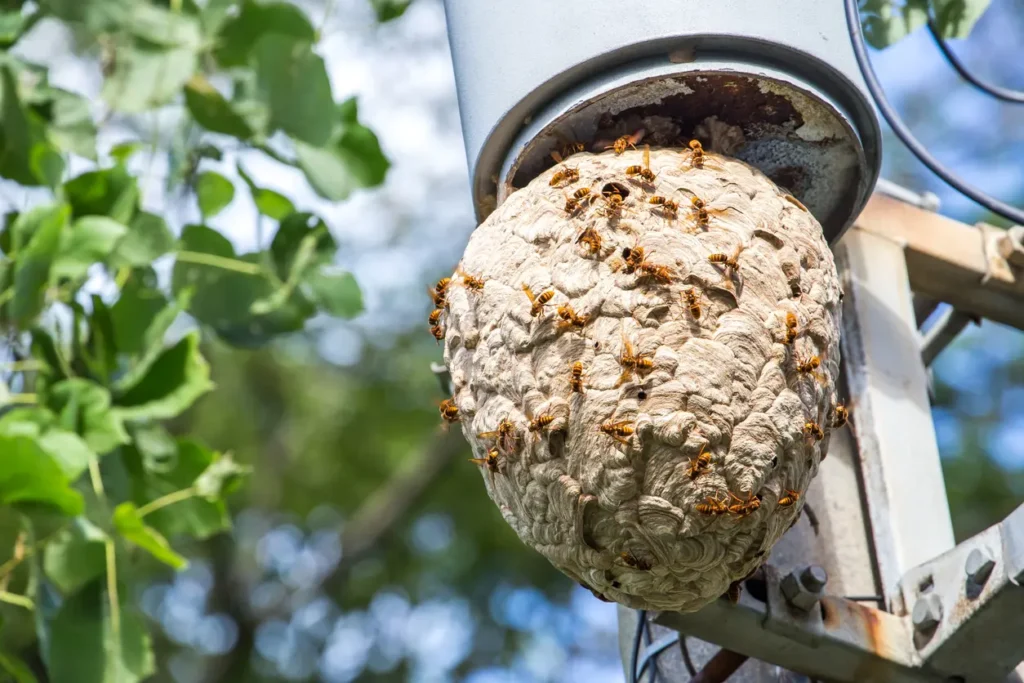
How to Get Rid of Hornets in Charleston, SC
Warm, humid air and frequent pop-up showers make Charleston ideal for rapid nest growth. DIY sprays may look like a shortcut, but they often scatter foragers or push colonies deeper into wall voids—especially with yellowjackets. The right sequence is simple and safe: inspect precisely, neutralize first, remove completely, and shore up the structure so the same seam doesn’t become next week’s nest.
Charleston’s architectural details matter. Historic fascia, open eaves, ornate brackets, attic and gable vents, and the meeting lines where additions tie into original framing create small, predictable gaps. Nearby, dense shrubs (camellias, sasanqua, ligustrum), vine runs, and privacy trellises become aerial “shields” where bald-faced hornets hang their papery “footballs.” When we align timing, placement, and prevention with those details, results last through the long warm season.
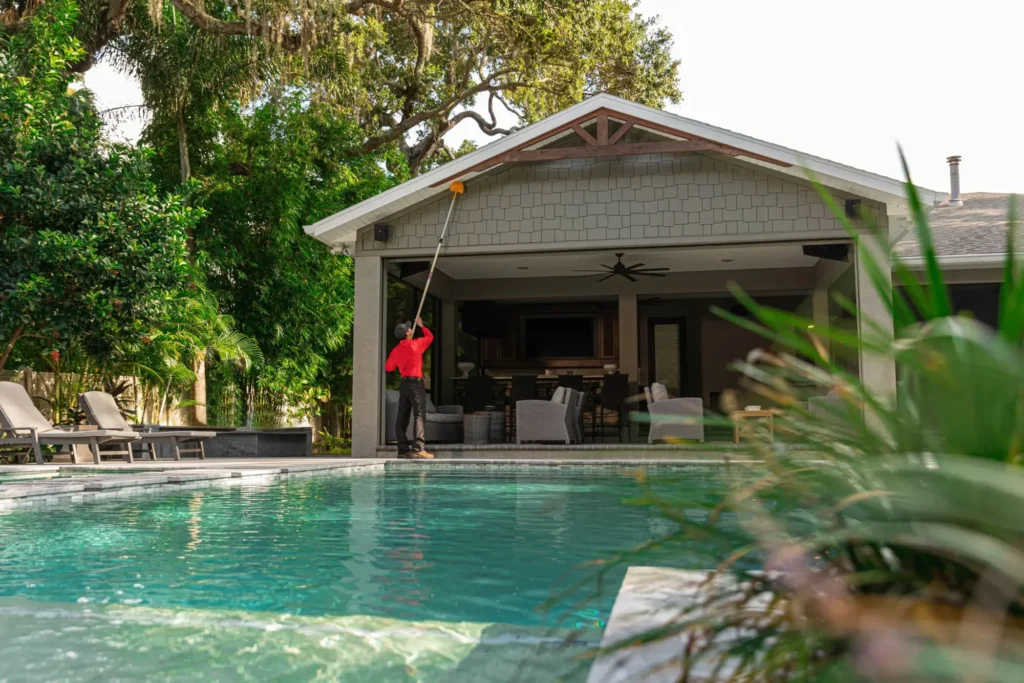
Hornet Treatment in Charleston, SC
The city’s mix of historic and newer construction calls for customized methods—not blanket spray. We tailor each step to your home’s materials, roof geometry, shade, and wind exposure, from piazza ceilings downtown to breezier soffits on James Island and Johns Island.
A Comprehensive Inspection
We map flight paths and high-probability anchors, checking eaves, soffits, porch rafters, attic/gable vents, fascia returns, pergolas, fence lines, and utility penetrations. On the Peninsula, vine-covered walls, alley breezeways, and interior courtyards can hide aerial nests just out of sight. In West Ashley and James Island, wide overhangs and mature oaks create wind-shadowed seams where paper nests thrive. Raised homes often have hidden voids around crawl-door frames, sill lines, and lattice that need a closer look. You’ll see photos and a prioritized plan before treatment begins—clear, concise, actionable.
Nest Removal
Timing is everything. We work early or late (when most foragers are home) to neutralize the colony, then detach and bag the entire nest—envelope and anchor residue included—so pheromone cues don’t trigger instant rebuilding. For bald-faced hornet nests high in canopy or at gables, we stage safe access and use professional PPE and tools. With yellowjackets entering soffits, fascia, or ground voids, we use void-aware procedures that collapse the colony instead of driving it deeper into walls.
Targeted Treatments
We place low-odor, professional formulations exactly where hornets and yellowjackets travel—entrances, landing seams, pergola beams, leeward soffits, lattice joints, and trim laps. No fogging of open living areas. After strong sea-breeze days or thunderstorms, we can revisit vulnerable seams to keep protection active while you enjoy porches and patios.
Exclusion
Prevention locks in the win. We screen attic/gable vents with pest-rated mesh that maintains airflow (key in our climate), close small soffit/fascia gaps, and seal cable/HVAC penetrations with mesh plus long-life sealant. On raised homes, we tighten crawl-door fits and reinforce lattice so it breathes but isn’t an on-ramp. These small repairs turn favorite anchor points into non-starters.
Integrated Pest Management
IPM keeps the property calm as weather shifts. We monitor post-storm, track flight pressure, and adjust placements seasonally. In leafier pockets (Hampton Park Terrace, Riverland Terrace), privacy plantings can create new calm zones mid-summer; IPM spots those changes and prevents surprise rebuilds.
Signs of a Hornet Infestation in Charleston, SC
Hornet Sightings
Repeated in-and-out flights to a single seam or vine-screened corner—especially beneath eaves or piazza ceilings—suggest an active entrance. On commercial blocks and backyard kitchens, steady patrols around bins and grill stations are another giveaway.
Increased Hornet Activity
Activity often spikes after a rain + heat window. Watch tree trunks, gable edges, pergolas, and leeward soffits; if you notice more hover and land behavior in the same spot each evening, there’s likely a nest nearby.
Hornet Nests
Bald-faced hornet nests look like gray paper “footballs” in trees or on structures. Yellowjackets prefer ground voids and wall/soffit cavities; you may never see their nest—just a busy doorway. Avoid disturbing either. Defensive swarms escalate quickly as colonies mature.
How to Check for Hornets in Charleston, SC
Observe at dawn or dusk when flight is calmer and more foragers are inside. Stand back; track patterns rather than chasing individual fliers. Look for:
- Repeated flight to a specific gap, soffit edge, fascia return, or vine-covered wall
- Gray, papery nest envelope tucked in shrub canopies or higher in live oaks
- Buzzing/tapping in a soffit, porch ceiling, or wall cavity near bonus-room dormers
If you see consistent traffic at one opening, don’t seal it. Neutralize first; then remove and repair so the colony doesn’t divert indoors.
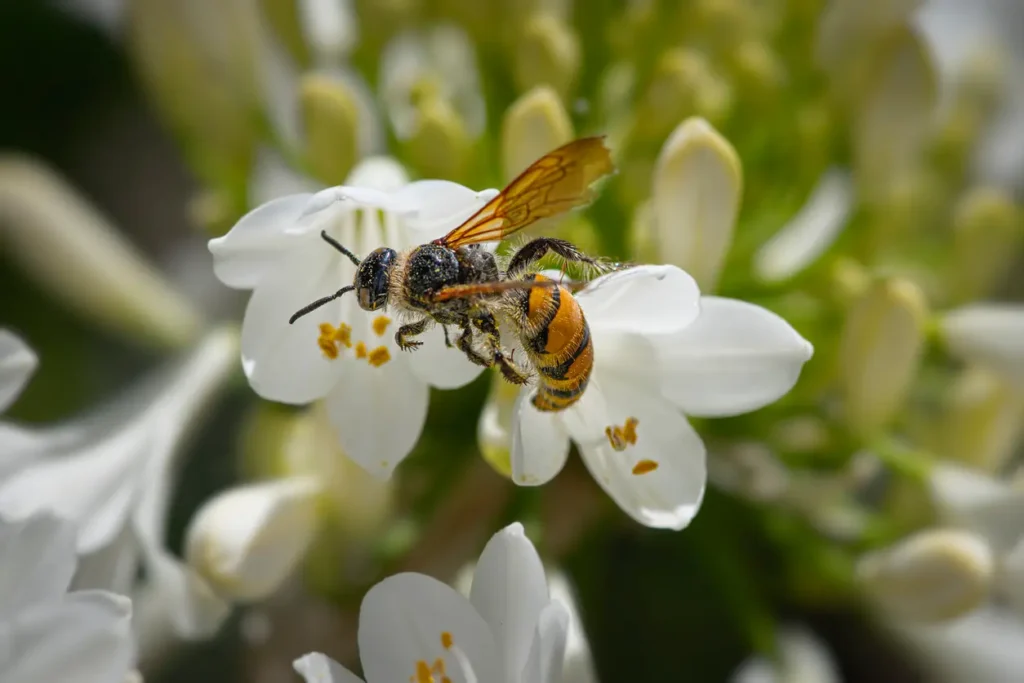
What Do Hornets Look Like in Charleston, SC?
Southern Yellowjacket
Small, black-and-yellow, highly defensive when disturbed. Common in ground voids (old burrows, root holes) and structural gaps along fascia or sill lines. Indoors sightings often follow a DIY attempt that pushed them deeper into walls.
Eastern Yellowjacket
Slightly larger cousins with similar habits—ground nests and hidden wall/soffit cavities. Watch for rapid, straight-line flights to a pinpoint entrance near rooflines and foundations.
Bald-Faced Hornet
Black-and-white “aerial yellowjackets” that build enclosed gray nests in trees, gables, or under roof overhangs. Colonies grow aggressive late summer; neutralization and full removal (plus anchor treatment) are essential.
Eco-Friendly Solutions in Charleston, SC
Charleston’s coastal ecology rewards a light, precise footprint. We emphasize placement and prevention, using just enough product, only where it works hardest.
Natural Repellents
Botanical-based formulations can discourage scouting and anchoring on beams and trim—useful near gardens or sensitive spaces. They supplement proper neutralization, removal, and exclusion.
Habitat Modification
Trim back dense shrubs and ivy, lift low branches off rooflines, and open vine screens around seating. Warmer-spectrum porch bulbs reduce night-insect draw, cutting the food source that brings scouts.
Exclusion Techniques
Fit pest-rated mesh to vents; add breathable weep-hole inserts; and seal small trim joints and utility pass-throughs. For raised homes, reinforce crawl entries and lattice seams. These upgrades preserve ventilation while denying access.
How to Prevent Hornets in Charleston, SC
Reduce Outdoor Clutter
Clear stacked planters, lumber, and idle gear off walls; store bins away from doors; keep pergolas and sheds tidy and well-lit from seating areas—hornets prefer quiet, shaded corners.
Trim Vegetation
Prune hedges off siding, thin camellias and ligustrum near eaves, and lift tree limbs away from rooflines. Sun and airflow make favorite anchor spots less inviting.
Get Rid of Food Waste
Rinse bottles/cans, clean grill surfaces, and bag trash tightly. Position bins away from doors and porches, especially during oyster roasts, tailgates, and weekend cookouts.
Seal Trash Cans
Use tight-fitting lids and keep rims clean; place cans where they’re visible and bright, not in shaded nooks that double as wind breaks and anchor sites.
Cover Holes in Your Lawn
After professional neutralization, fill old burrows and root voids that invite yellowjackets. If a hole shows steady traffic, don’t flood or fill it—call to neutralize first, then restore safely.
Additional Preventive Measures :
- Shift to warmer-spectrum bulbs at entries to reduce insect draw and scouting
- Keep outdoor dining areas clean and covered between uses
- Schedule post-storm exterior checks—wind and rain open fresh gaps

Why Choose All U Need Pest Control for Hornet Control in Charleston, SC?
Because local nuance matters. Our teams work Charleston blocks daily and understand how wind, shade, and roof geometry shift nesting sites—from piazza rafters on the Peninsula to leeward soffits in West Ashley, pergolas in James Island and Johns Island, and gable edges on Daniel Island. You’ll get:
- Photo-documented inspection with a plan you can digest in minutes.
- Colony neutralization + full nest removal (not just knockdown).
- Seam-focused exclusion that preserves ventilation and curb appeal.
- Guarantee-backed follow-through—if activity returns during coverage, so do we.
Ready to reclaim your porches and yard? Call 1 (888) 239-BUGS for a free inspection. We’ll inspect, remove, and protect—so you can enjoy Charleston’s outdoors without the stings.
Location Contact:
419 N Cedar St Summerville, SC 29483
Get Directions for 419 N Cedar StSummerville, SC 29483 on Google Maps843-489-8818
Call All "U" Need Pest Control